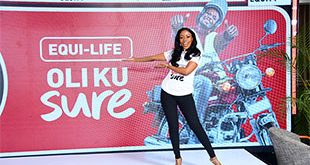
Soroti, Uganda | THE INDEPENDENT | Local leaders in Teso have welcomed President Yoweri Museveni’s decision to suspend aerial spraying of desert locusts in preference for the ground spray.
Museveni, in his address to the nation on Sunday, alluded that ground spraying by soldiers using hand sprayers and motorized pumps was more effective than the aerial spray. He noted that the aircraft was small and unable to work at night when the insects have settled.
“Another mistake they made was to depend on the aircraft. First of all, these aircraft are small and secondly, they don’t fly at night. The locusts land at 7:00 pm and lay there until it gets warm, the following day, around 10:00 am. The aircraft wait until 8:00 am to spray but even when they are up there, they don’t see”, Museveni said in his address.
Leaders in Teso want the government to continue with ground spraying of the insects as opposed to the aerial spray. The spraying conducted mostly at night has seen a reasonable number of locusts destroyed.
The soldiers use torches; sometimes tied either on their foreheads or hands. In some instances, residents help soldiers flash the insects with their torches or any lights available.
Walter Elakas, the LCV Chairperson Katakwi says ground spraying of locusts is very effective and cost-friendly. He observes that night spray prevents local communities from chasing away locusts as some of the communities in Teso had resorted banging pans to chase away the insects.
Rajab Ogogol, an entomologist in Kumi district says that ground spraying is very effective with the engagement of the local community that he notes help in fetching water, locating insects and guiding soldiers. With the torches, Ogogol says that the soldiers can see the insects at night and spray them.
In Kumi, the locusts destroyed more than 1,000 gardens of millet, cowpeas, green gram, watermelon, rice and soya beans among others; affecting 707 households in the district, according to Ogogol.
More than 2,000 Local Defense Unit, LDU personnel were trained by the Ministry of Agriculture, Animal Industry and Fisheries on how to spray locusts with hand pump sprayers.
At least 22 billion shillings was released by the government to combat locusts’ invasion in the country.
The government had moved swiftly to enlist the services of the UPDF soldiers to spray locusts manually but as fears of more swarms invading the country engulfed, it prompted officials to outsource for two aircraft to implement aerial spray.
In February, Mehari Tesafayohannes, the Chief Information and Forecasting Officer for the Desert Locust Control Organization for East Africa, DLCO- EA told leaders from local governments affected by the locusts’ invasion that the use of aircraft to spray desert locusts was an expensive venture.
But government proceeded to hire the specialized aircraft that was delivered to Moroto Airfield on February 22nd, 2020, ready to start surveillance and spraying of desert locusts that had already been sighted in 24 districts of Karamoja, Teso, Parts of Acholi, Lango and Sebei. The plane, however, flew for a few days before it lay redundant due to the absence of chemicals used for aerial spraying.
*******
URN
 The Independent Uganda: You get the Truth we Pay the Price
The Independent Uganda: You get the Truth we Pay the Price



